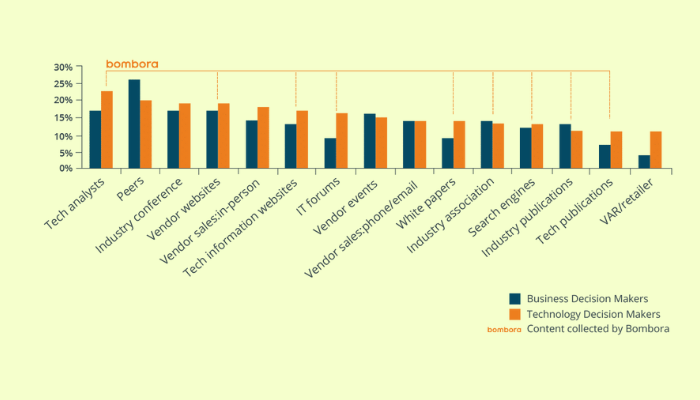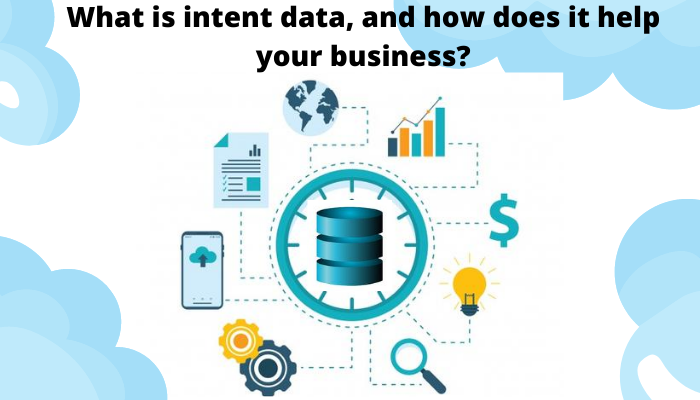Data collected basis the research of users’ behaviour is called intent data. A and Y both look for things online. Whether they want to buy a product or are looking for information related to a specific product- it can all be summed up in a user behaviour journey online. ‘A’ is looking for a ‘Where’ on a search engine whereas ‘Y’ is reading and searching for a ‘How’ on knowledge forums and blogs.
Product managers and engineers often use this journey to develop insights into their customers’ minds. The consumption of content indicates their behaviour, demographics, and state of mind when they search for your product.
The thousands of topics the customers touch upon and millions of websites they browse through gives the product managers a peekaboo into their mind. The marketers learn how their customers think, what are their expectations from the market and what do they have in mind- a product, service and most importantly, milestones they visit before they make a final purchase.
All this information makes for intent data- an inside view into their customers’ world and their intention.
When a customer wants answers, they visit their trusted search engine and look for them. A customer would visit any of these on the internet to address their issues:
⇒Websites
⇒Whitepapers
⇒Case studies and use cases
⇒Review aggregator websites
⇒Newsletters and online publications
⇒Webinars
This online behaviour activity all over the internet is recorded as intent data.
Why does your marketing and sales team need intent data?
Intent data gives insight into a customer’s thought process and mind. The steps they go through before finally parting with their money for a product or service. It tells why your customers just stop short of making a final purchase too. The journey of a customer’s purchase starts from an online search.
Whether the final purchase takes place offline or online, the research takes place online. Intent data foretells the marketing and sales team the places where all they should be present with their content to nudge customers or to give that final push to the shopping cart and payment gateway.
According to Bombara intent guide, there are the following content sources identified by Forrester Research too.

By harnessing intent data, the marketing and sales team can find out the target demographics, their needs, as well as expectations they have from a product. The teams can also figure out why, despite going all the way, customers are shying away from making the final purchase?
However, intent data alone can’t be used for market forecasting. It is used in a combination of market research, technographic data, and firmographic data, Installbase, rolebase, accountbase. It shows how sales and marketing should plan, pitch and, prioritise.
Types of intent data
Intent data is recorded and tracked with cookies, and the IP addresses of the customers. The marketing and sales team use two types of intent data to improve the accuracy of their market.
First-party data or engagement data
The first-party data is collected when a user visits your website. It is the most basic and familiar way used by most of the marketers. However, since only cookies are used, this data remains anonymous unless, of course, your website has a form with name, contact and email information. If your company has e-book download, a freebie for your customers, or a way to capture your data- then you can record their information.
Third-party data
Third-party data is often collected by data co-op companies, review aggregator websites and analyst sites. When a customer visit these websites, they record the surge and spike in the topics and track the intent of the users.
How can businesses use intent data?
This combination of intent data improves a business’ penetration in the market and its access to the customers. A marketing team devise a more targeted approach to reach out to its customers and find out various ways to address the needs, expectations and challenges of the market.
The content can be customised at each step and be more specific. Here are some of the use cases for intent data for businesses that can improve and enhance their growth and access:
An agile approach to creating a B2C or B2B email building list: Once a marketing or sales team starts trusting the intent data for their business, they take a step ahead in data hygiene. By harnessing intent data and with web scraping services in place and company can stay ahead of the curve.
Better content: Sales and marketing teams can have content at places where their customers are. Besides, you can personalise the content as per their search query and requirement. Similarly, you can have targeted advertising at areas where they are most likely to visit and research for topics related to a service or product.
You can buy intent data online through various data co-op companies like DaddyLeads. However, before you hit that buy button, here are a few things that you should be careful about:
Does the data cater to your business and its specific needs?
Does the data offer you account-based information or leads?
How has the data been collected? Is it recycled data? Is it a one-size-fits-all data or a unique approach to cater to your business?
How extensive and elaborate is the data they are selling?
Is the company offering any insights into the data to help your marketing and sales team?
Intent data works well when it is combined with other data. It can’t offer you the whole context of the market.
Also, like every other thing in this ecosystem, the intent data is prone to mistakes, inaccuracies, duplication, and inconsistencies. Your prospects may have been just browsing, may have entered their information wrong intentionally or it might be an incorrect IP address. There are so many things that can go wrong with intent data as well.
It is when you need data mining services. If as a decision-maker, you wouldn’t like your sales and marketing team to spend time on fixing the data, or wither away their productive hours on non-marketing activities, you need data appending, data scrubbing and data verification services to work along.
What is the importance of intent data?
Intent data, as mentioned above, holds the light to your customers’ thought patterns. It is like reading their mind, and finding out if your product is the right fit for their lifestyle, or it. With intent data, you can build your product to adapt, and not to last. Intent data should be used with the internal and external databases.
Internal data can be sourced from marketing, and sales lead generation campaigns, email marketing, and downloads. External data can be compiled via different databases and various independent sources.
Businesses can use the data for automated campaigns for customised outreach, account-based marketing, forecast, predictive lead generation and so on. Based on this data, they can hyper-personalise the content and email marketing campaign with help of email appending services
The intent is a process of understanding your customers/buyers in the following way:
Demographics:
Who are your customers?
What do they do?
What is their age?
What are their gender and age?
Their purchasing journey:
What are they planning to buy?
What interests them?
Is it a casual interest, or are they serious about the purchase?
How can you target them?
Targeted advertising
More personalised email marketing
Specific intent-powered content
Intent management
The best way to manage your intent database
Email data validation and email verification
It is the holy trinity of FIT (technographic), Intent and Opportunity that help you put the pieces of market forecasting together.
But what goes wrong with intent data?
The widespread availability of intent data is the bane of marketers. Quality of data trumps the quantity of data. So, while you look at high-quality prospects all starry-eyed and hope for a miracle, the fact is it might not be that good as you believe it to be. Enough data isn’t proof of an excellent predictive lead score. Quality data is.
Data mining services are a must if you want to ensure that your intent data is accurate and consistent. Hire a data mining service, skip tracing services company to provide data hygiene.
The ugly side of intent data
A customer does eighty-seven per cent of research online before making a final purchase. With intent data, a product manager and content marketer can place content where the customers are.
However, given how mammoth the internet is and monolith marketing processes are, it is impossible to put content on websites and platforms that aren’t yours.
Sometimes, it is the premium content prices or a platform that is not as neutral, or your digital marketing strategy isn’t just clicking with the customers-irrespective of the reason you can’t be everywhere. You also need to track third-party websites to have a wholesome database.
It is why the best way to go forward with intent data is to use a third-party vendor and buy data. These data companies track users via review forms, lead generation exercises and online events and record surge or enhanced interest over some time.
However, these algorithms, recording and tracking give you raw data with several parameters such as CTR, scrolling speed, bounce, time spent on reading a page and so on. You need reliable and robust data to act upon and make a business decision. It is when you would require data mining services to spring to the good side of data.
Your data mining service provider would offer you high-quality leads that convert. Here’s how.
Manual data mining services include data appending and B2B email list building that offers relevant data specific to your business and its objectives.
The report by TOPO highlights the importance of intent data and shows it to be the fastest-growing solution. The predictive intent data coupled with pre scraped services can help your business to stay ahead of the curve by enhancing the relevancy of the content, hyper-personalising the target ads and being right there where your customers are.
